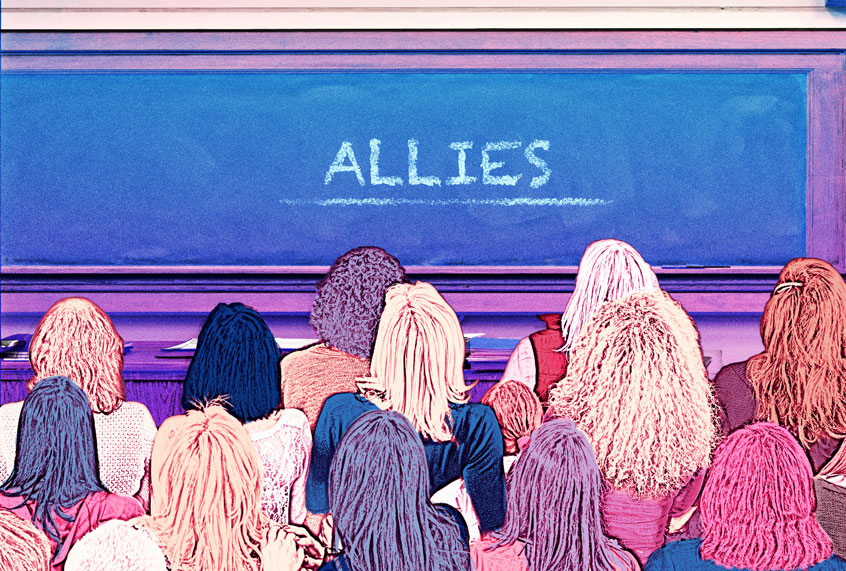One unresolved mystery of the relative closeness of the presidential election has been the vote among women, particularly white women.
Listening to the elation in the streets about having our first woman vice president in Kamala Harris and the supportive calls of healing from Joe Biden, you might have thought this was evident in the voting patterns.
But despite Donald Trump’s long record of misogynistic statements, policies and personal acts:
- While women voters backed Biden, it was by the same proportion as in 2016, a 13% majority.
- More than half of white women voted for Trump, according to exit poll data. So did white men.
- Black women voted much more for Biden, even more strongly than Black men.
From all the polling information and actual campaigning before the election, it seemed certain that women were expected to reject Trump in large numbers.
What analysis there has been says Joe Biden won votes from all women by about the same proportion as had Hillary Clinton or Barack Obama. In other words, in the Centennial year for white women’s suffrage, there was no tidal wave among women voters here for the slate that had a woman vice-presidential candidate.
Now, exit polls are rough – this year even shakier with changes in voting shifts and pandemic. They combine in-person interviews with Election Day voters and telephone polls of mail voters and early voters. Still, they give us some information toward understanding the who and why.
It appears that other factors, including partisan orientation, rural vs. urban location, race and age showed more variation than did gender. There appears to be a slightly lower gender gap in the presidential vote, though the variation better reflects changes in voting by men.
So, we’re left with a conundrum: Over a lifetime, Trump regularly demeaned and insulted women, he faces multiple charges of assault, he has paid off porn stars for sex, he campaigned by telling suburban women he would find jobs for their husbands, he promoted policies attacking women of color, Muslim women, immigrant women.
Women mobilized with pink pussy hats and huge protests.
But on Election Day, a majority of white women ignored that and voted Trump.
Institutional Bias
So, is it engrained white entitlement—the public shaming of “Karens” too quick to call the police for minor or no issues involving Black passersby—or are we confusing the efforts to categorize voters? How do we explain voting behavior from what people say they care about?
Charles Blow, The New York Times columnist, was direct here:
“Let me be specific and explicit here: white people — both men and women — were the only group in which a majority voted for Trump, according to exit polls. To be exact, nearly three out of every five white voters in America are Trump voters. It is so unsettling to consider that many of our fellow countrymen and women are either racists or accommodate racists or acquiesce to racists… In any case, white women vote for Trump at higher rates than all other women, despite the fact that Trump has spent his first term, indeed his whole life, denigrating women.”
Political analysts offer some other thoughts here: Year after year, political party shows itself a stronger force in presidential politics than gender, for example—partisan identity, as it were. And voting patterns among women, or white women, move less over years than male voters for reasons that are not obvious.
These questions about understanding votes by women presage wider questions for Democrats, who already are showing the pressures of just how progressive this new administration will prove to be, how assertive about structural ills.
The Trends; the Campaign
This year’s campaign focused a lot on suburban voters, who had been said to be moving toward Biden. That cut both ways: Trump appealed directly to white suburban women with messages of fear and property loss, arguing Democrats want to destroy suburbs with more affordable housing.
College-educated white women and white men were split fairly evenly between Biden and Trump, with more women leaning toward Biden.
However one defines it, a majority of white women voted for Trump to protect what they have – status, income, tax advantage, whatever – despite Trump’s anti-woman attitudes and record. That is the exact thought at the center of the many books, training classes and symposiums going on across the nation about the nature of institutional racism.
Meanwhile, Black women got the vote out in urban centers, in particular, making for the close results in Georgia, Pennsylvania, North Carolina and other states. Black women went for Biden in a slightly greater proportion than Black men; there were similar numbers among Latino voters. Black women organized communities to vote.
For historical note, women narrowly have backed the Democratic candidate in every election since 1996. On average, women have been 8% more likely than men to support Democrats since 1980, according to the Pew Research Center.
Studies have suggested that causes for the gender gap in the last several decades are almost never issues like abortion rights and sexual harassment, as much as feelings about government involvement in care and education. The economy and likely coronavirus would be more at the center of votes for women, a Pew analyst wrote.
But apparently not if one candidate could label those ideas socialism, toss in a lot of fear and salt it all with debasing invective.
In voting, white women apparently ignored insults to their personal dignity.
Biden says he wants to focus on healing rifts that Trump widened. One way to start is to stop insulting half of Americans who are women. But another is to persuade all of us to recognize how deep the racial divide runs through all of our social institutions.


